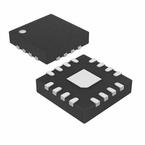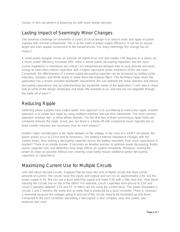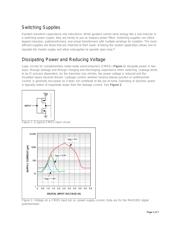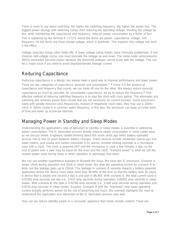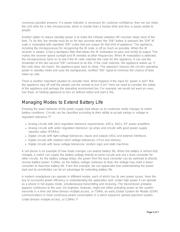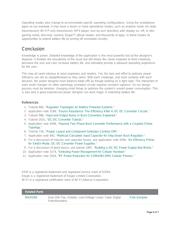herunterladen

Maxim > Design Support > Technical Documents > Application Notes > A/D and D/A Conversion/Sampling Circuits > APP 5570
Maxim > Design Support > Technical Documents > Application Notes > Amplifiers > APP 5570
Maxim > Design Support > Technical Documents > Application Notes > ASICs > APP 5570
Keywords: power efficiency, power management, microamp, battery life, minimize heat, reducing ripple,
switching power supplies, interleaved phase, noise, ESR, inductors, resistors, ferrite bead, stacked
circuits, standby, sleep, frequency, battery
APPLICATION NOTE 5570
Integrating Power Passives and Tactical Trade-Offs
for Power Efficiency: Part 2, Balance - Work
Through All the Choices
By: Bill Laumeister, Strategic Applications Engineer
Mar 08, 2013
Abstract: Power efficiency is a critical element of any design. Power management has become more
complex, with every microamp counting in the search to extend battery life or minimize heat. This
application note explores paradoxical engineering trade-offs, such as reducing ripple in switching power
supplies and managing power in standby and sleep modes, to achieve increased power efficiency.
A similar version of this article appeared on Electronic Design, February 15, 2013.
Introduction
Power efficiency—we have all had to deal with it in
our designs. Always a critical element of any design,
today power management is a particularly complex
and difficult topic because we must count every
microamp to extend battery life or minimize heat.
Sometimes being a design engineer feels like
walking a tightrope. We solve by iteration, revisit the
various operating modes, redefine the conditions,
and balance trade-offs with application needs.
This application note is the second in a series on
power efficiency. The first, application note 5569,
“Integrating Power Passives and Tactical Trade-Offs
for Power Efficiency: Part 1, Harmony - Design like a Symphony Conductor,” discusses how a design
engineer must identify even small deficiencies in the power structure that could negatively impact power
efficiency. Like a musical conductor, engineers control the power parameters that result in a harmonious,
efficient system…or conversely, something less than ideal. In this application note, we continue to explore
many of the contradictory, incongruous, and paradoxical engineering trade-offs available to us. If we look
Page 1 of 7

